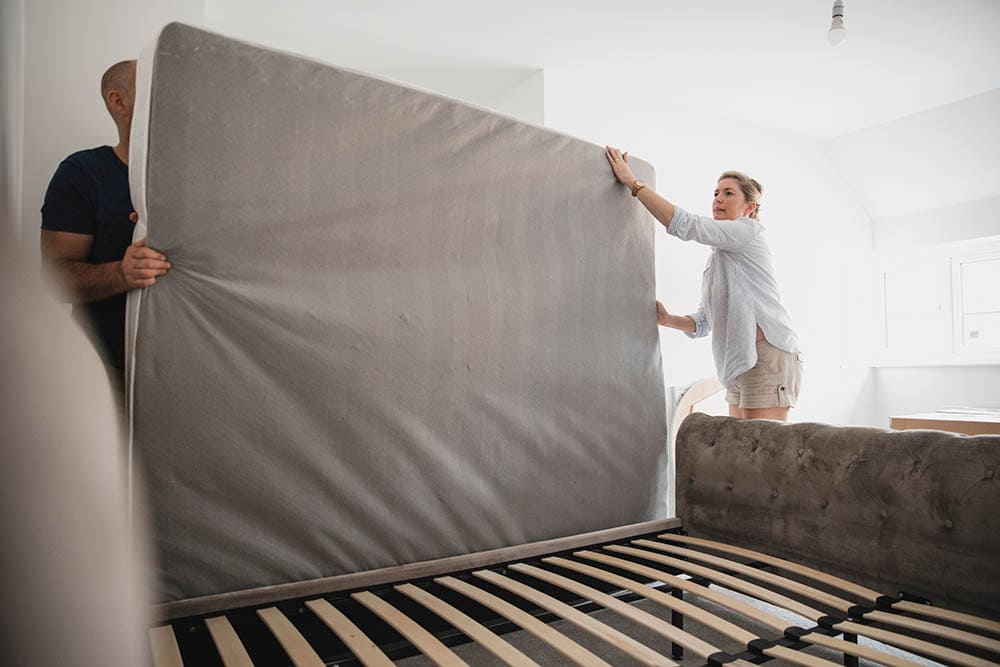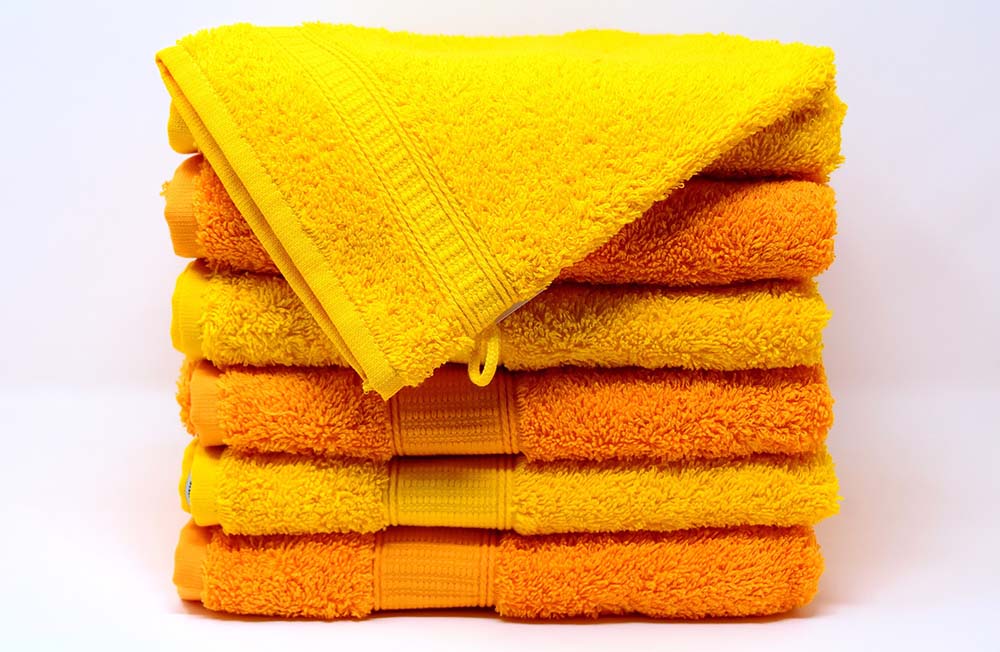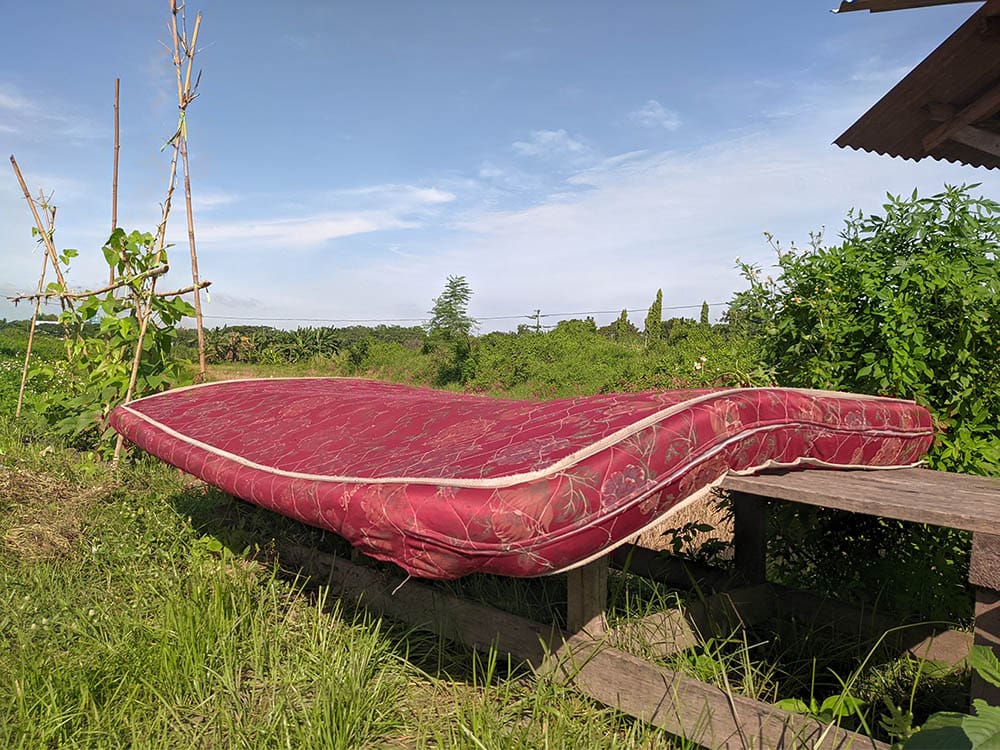How to Dry a Wet Mattress Fast: 6 Methods
-
Pete Ortiz
- Last updated:

A mattress is supposed to be your saving after the daily work tedium. However, liquid-related accidents may happen, like when a mattress is soaked by a child’s or pet’s urine, from water spilling, or from being rained on through an open window. The situation worsens when an odor emanates from your mattress. If you live in an overly humid environment, you have probably experienced this problem at least once or twice.
So how do you dry a wet mattress? Fortunately, you don’t have to wait until spring to dry mattresses. In fact, you can easily dry out a soggy mattress in less than 24 hours. The key to rescuing a water-logged mattress is speed. Therefore, immediately after you spill water on your bed, you will need to get the covers off and begin drying as soon as possible.
In this article, you’ll learn how to dry a wet mattress quickly. We will also discuss why wet mattresses need swift action, as well as highlight the different types of mattresses and how they dry. Read on to learn more.
Why Is It Necessary to Dry Your Mattress Quickly?
Before we discuss the mattress drying process, you need to understand why a wet mattress requires fast action. Even if the liquid that soaks into your mattress is merely water, it still poses a threat to its functionality. Some mattresses are made from absorbent and spongy materials that allow water to accumulate, creating breeding grounds for molds and germs.
If you let the liquid sit on the mattress for a while, it will start to smell and attract mold and bacteria whose effects can be detrimental to your health. According to studies done by the American Cleaning Institute¹, mold is the number one cause of frequent allergens in American homes. Molds can cause allergies, asthma, and other respiratory issues in human beings.
In addition, the metal components in your mattress, like coils and springs, will begin to rust when exposed to water, thus losing support and contouring capabilities. This is particularly common in cheap and sub-standard mattresses. So, if liquid-related accidents occur on your mattress, ensure you respond swiftly.
That being said, if your mattress has been wet for more than 48 hours, it’s safe to continue with the drying process. It’s common practice for people to throw out their wet mattresses, but you don’t need to do this. A mattress is a sound investment and should serve you for at least a decade.
The 6 Methods for Drying a Mattress
1. Using Dry Towels

After removing the mattress cover and assessing that the liquid damage is not severe, the next step is to soak up the moisture. In this step, you also need to be quick enough to prevent the liquid from being absorbed into the deeper layers of the mattress. Use absorbent materials such as a dry towel, paper towels, or any piece of dry cloth.
Simply blot the wet area with the towel to absorb as much liquid as possible. While blotting, apply a lot of pressure as you press down the mattress. This will allow you to get deep into the mattress to prevent mildew and mold from forming.
Repeat this process until the towels are no longer absorbing any liquid. If the spill is severe, you might want to use a waterproof vacuum cleaner to suck out the liquid from deeper layers of the mattress.
2. Apply an Anti-Mold Mixture
This step is necessary especially if your mattress was initially dampened by dirty water, urine, or blood. As earlier mentioned, mold on a mattress can create serious health risks to human beings¹. To prevent mold or mildew from forming on your mattress, create an anti-mold mixture to wipe the surface of the mattress.
To make this mixture, mix equal parts rubbing alcohol or hand sanitizer and water. The concoction will work as an anti-bacterial mixture, killing off any mold particles in the affected areas. When the mixture is ready, apply it to a towel and wipe the mattress’s damaged area. The alcohol in the mixture should assist in the drying process and will not add to the moisture on your mattress.
In case you are dealing with a pungent odor on your bed, consider adding cleaning solutions or soaps to the mixture. They will help counteract the smell from the anti-mold mixture as well as the odor from the mattress.
3. Using Absorbents

Paper and cotton towels will only go as far as absorbing visible water from the mattress’s surface. So, after removing liquids from the surface, proceed to use absorbents to suck out as much moisture content as possible. Absorbent agents help to absorb liquids from a mattress preventing them from getting into deeper layers.
- Baking Soda: Regular baking soda is a common household item with moisture-absorbing capabilities. Soda is an ideal absorbent if the spill on the mattress is not too significant. Liberally sprinkle the soda powder over the wet area, let it soak for an hour, then vacuum the mattress. The main benefit of baking soda as an absorbent agent is that it doesn’t leave any residue behind.
- Cat Litter: If the spill is large and deep, you can use cellulose granules or silica crystals to soak up the liquid. These substances absorb more moisture content from the mattress, thus allowing it to dry faster. You need only pour a healthy quantity of cat litter over the spill and allow it to soak for a while. Cover the litter with a cloth and apply pressure to further assist in the soaking process. After a few hours, you can then vacuum the mattress.
- Oil Based-Absorbents: These absorbent agents should only be used if the liquid spilled on the mattress was oily, like salad dressing, cooking oil, and motor oil. These have a high fat content that is easily soaked up by this type of absorbent.
For optimum results, experts recommend that after applying an absorbent to the affected area, use either a towel or toothbrush to rub the substance deep into the mattress. Afterward, let the absorbent sit on the mattress for at least 12 hours or longer depending on the severity of the spill. You will know this step was successful when the absorbent agents become moist and clumpy.
4. Using a Vacuum Cleaner
In this step, you will use a vacuum cleaner to remove any lingering moisture and remove the absorbent agents. Simply move the hose across the surface of the mattress to remove as much moisture as possible. This process should be done once for lesser spills but repeated several times for bigger spills. You may need to sit and press hard into the mattress with the hose to give you the driest results.
When vacuuming a mattress, it’s best to use a wet-dry vacuum because the dampness in normal household vacuum cleaners can cause interior damage.
5. Dry the Mattress With Air Circulation or Sunlight

This is the final method of drying your mattress. You can either opt to use a table fan or take it outside for aeration and sunlight. When using a table fan, ensure that the device is close to the mattress and let it absorb air for at least 8–12 hours. If you don’t own a table fan, ceiling fans also work great, but you will require at least 24 hours for the mattress to dry completely.
However, if you prefer a more natural drying method, take the mattress outside, and let it sit under direct sunlight for 3–5 hours. Fresh air and sunlight not only rush the drying process but also helps reduce the likelihood of mold growing on the mattress.
- Memory Foam Mattresses: Memory foam mattresses are similar in structure to a sponge. They easily soak up the moisture content and take a significantly longer time to dry. This is because they are difficult to aerate. Fortunately, they lack mental components that can rust when exposed to moisture.
- Latex Mattresses: These mattresses are heavier and denser than the memory foam variety. However, they dry out faster. The high density late prevents liquids from seeping deeper.
- Innerspring Mattresses: Innerspring mattresses are also heavy and quite difficult to dry out but are more easily dried compared to latex and memory foam mattresses. This is because they have air vents in their structure that allow aeration, which assists in reducing the drying time. The only drawback is that they have metal components in their center that are susceptible to rust when exposed to moisture. Fortunately, manufacturers are now producing plastic and stainless-steel springs that are rust resistant.
- Hybrid Mattresses: As the name suggests, these types of mattresses are made by combining memory foam and innerspring mattresses. They contain metal coils that are prone to rust, which causes them to warp and break down over time when exposed to moisture. However, they are easier to ventilate than all the other mattresses.
Conclusion
A wet mattress on your bed can be depressing. Dust, bacteria, and mold found on wet mattresses can cause eczema, asthma, and allergies in humans. But if you happen to spill liquids on your bed, our detailed article explains how to dry a mattress in six easy steps.
Featured Image Credit: DGLimages, Shutterstock
Contents


